
Talgo Series 6 Bistro Car Donated to Northwest Railway Museum
Written by Northwest Railway Museum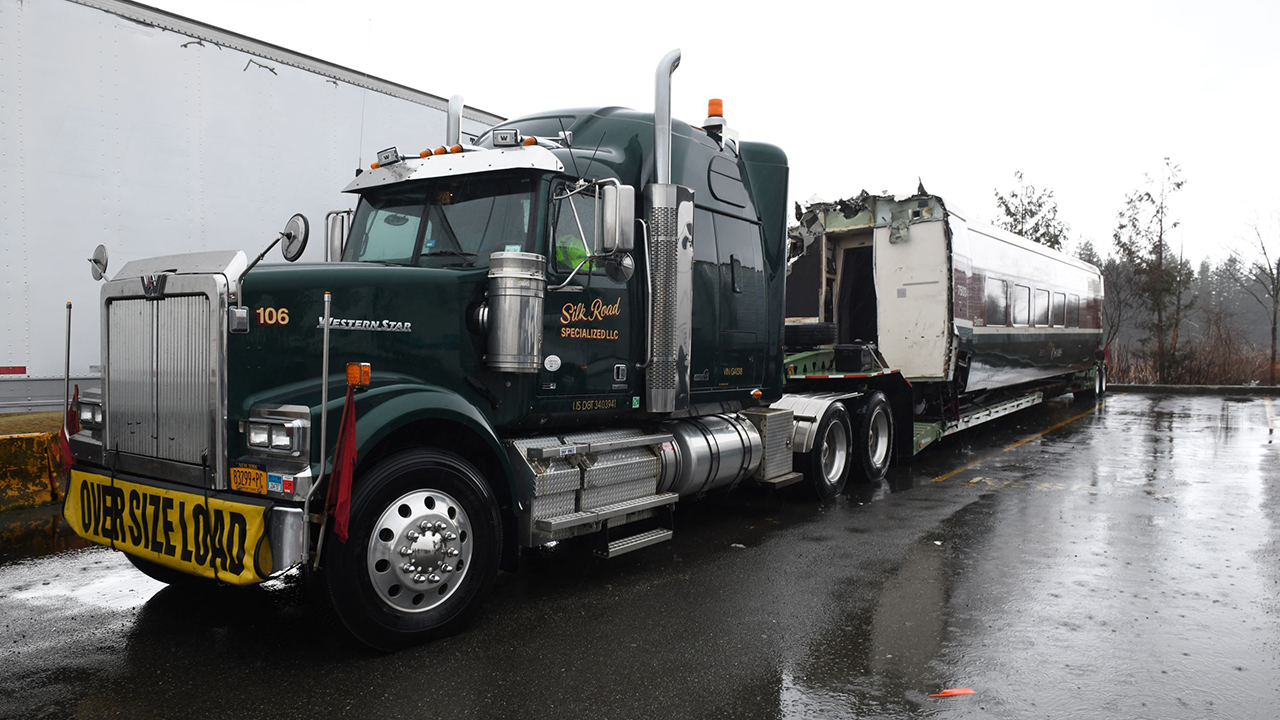
Talgo Series 6 Bistro Car 7304 on its way to the Northwest Railway Museum.
The Northwest Railway Museum is preserving the only surviving Amtrak Cascades Talgo Series 6 Bistro Car, #7304. The car has returned home to the Pacific Northwest from Indiana for conservation and exhibition, and eventual inclusion in the Museum’s exhibit hall expansion.
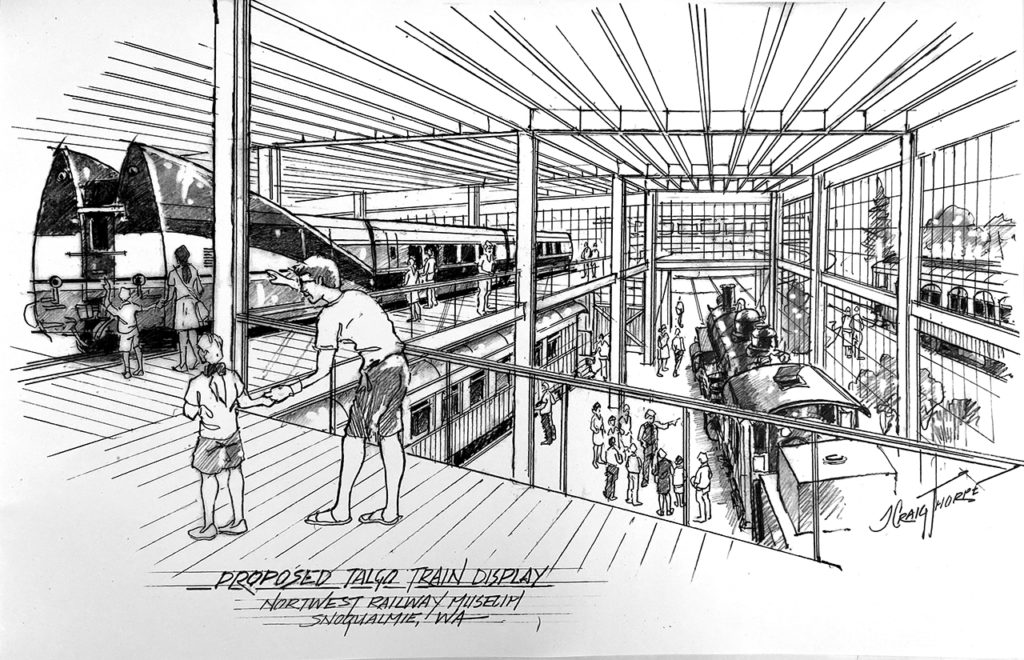
Final assembly of the Talgo Series 6 trainsets was performed in Seattle; five trainsets were built. They entered Amtrak Cascades service in the Eugene-Portland-Seattle-Vancouver, B.C. Pacific Northwest Rail Corridor in 1999. They were retired in 2020, after carrying more than 14 million passengers. The six Bistro Cars provided food and beverage service, and featured an elegant design that supported a dining car, but also provided take-away food and beverage for passengers to consume at their coach seats.
Award-winning industrial designer César Vergara created the Bistro Car interior design. Vergara is a Mexican-born American described as the “Raymond Loewy of today,” and whose legacy in the field is recognized as worthy of continued preservation and interpretation. The Bistro Car, with its custom-designed Pacific Northwest interior that featured an illuminated map of the region, represents the apex of Mr. Vergara’s career, which spans continents and many decades. The beautiful Vergara-designed Talgo Series VI trainsets dominated the rail landscape of the Pacific Northwest for more than 20 years, and they transformed the public’s impression of passenger rail. Ridership steadily increased.
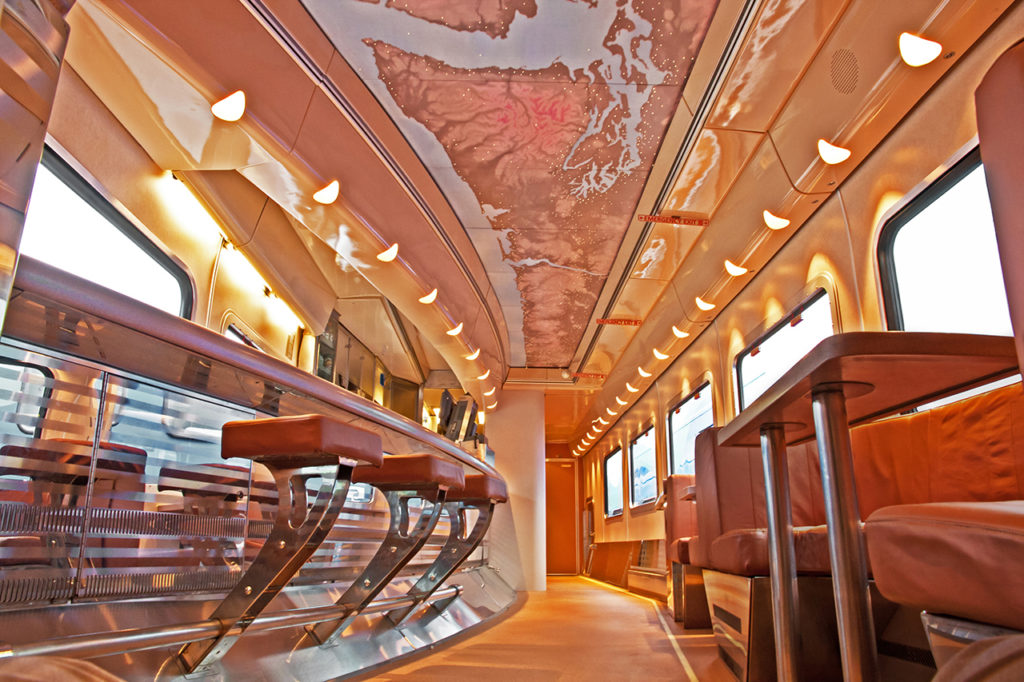
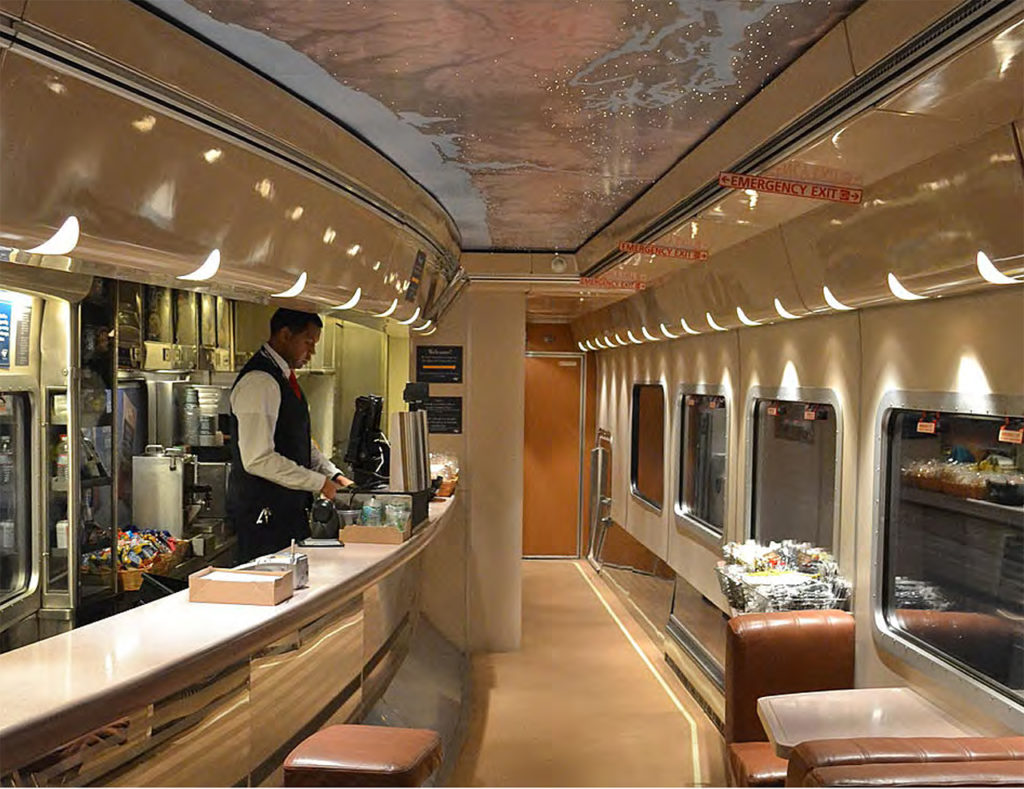
Rail Excursion Management Company (Rail Exco) donated the Bistro Car to the Museum, and provided invaluable assistance in preparing the car for its return to Washington State. Rail Exco CEO Adam Auxier offered, “I am happy to have played a role in ensuring this important railway artifact is preserved.”
Latinos in Heritage Conservation, a nationally organized group, supported efforts to preserve the Bistro Car. Vergara’s contribution to Latino heritage may be recognized and used to inspire a new generation of Latino students in the field of industrial design. The Museum and railway heritage supporters have worked for more than two years to save this exceptional historical artifact from destruction, but the effort is ongoing. Public support is vital to ensuring that the Bistro Car is conserved and interpreted. Contributions to the Museum will be used to offset the significant costs associated with moving. Caring for this artifact and may be made at https://TrainMuseum.org/.
Trainset Backgrounder
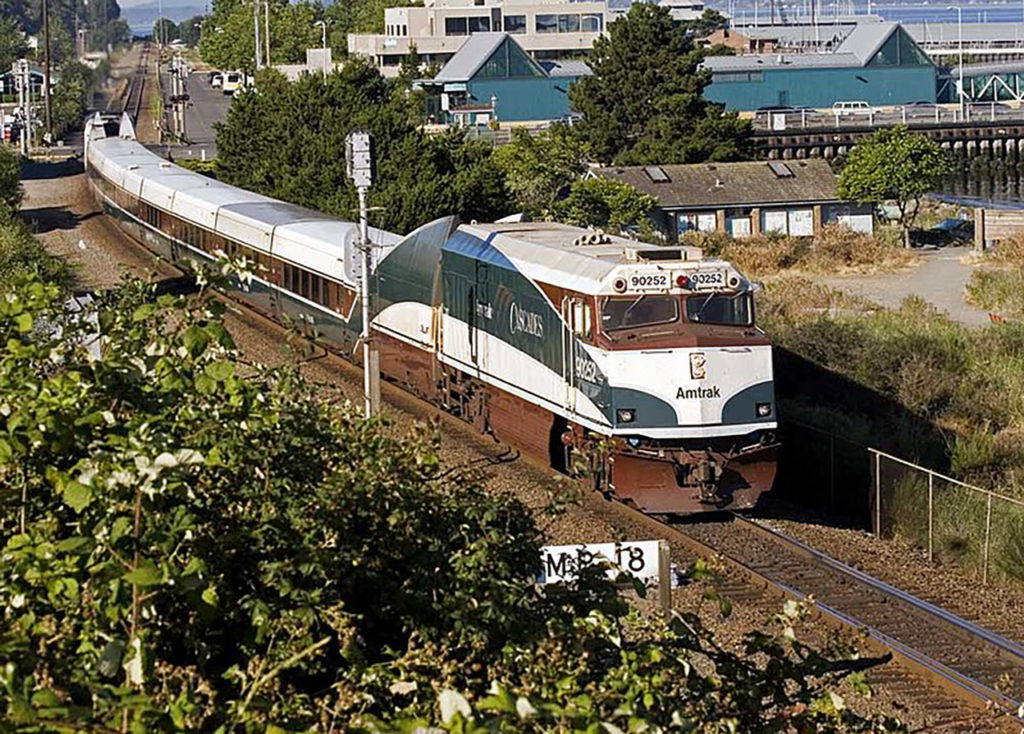
In 1996, the Washington State Legislature appropriated $20 million for the lease-purchase of two trainsets by the Washington State Department of Transportation (WSDOT). The trains were intended for use in the Pacific Northwest Rail Corridor, a federally designated high-speed corridor. After a rigorous RFP, Talgo was selected to construct the trainsets.
Amtrak subsequently added onto the order and purchased two more trainsets from Talgo. Talgo built a fifth trainset on speculation that it might be used for a proposed Los Angeles-Las Vegas service.
The construction of the trains was substantially different from Amtrak’s standard rolling stock. These trainsets consisted of cars approximately 46 feet in length, vs. a standard 85-foot car. They were a proven design in Europe, and similar cars had been leased and used in the U.S. railway network for several years prior, with widespread positive passenger reactions.
Talgo trains had several unique design features. First, they tilted when going around curves, providing a smooth ride for passengers. This feature enabled a substantial reduction in travel time between Seattle and Portland, as the trains could go faster around curves than conventional trains. Second, the whole trainset was articulated, with cars sharing wheelsets, similar to modern double-stack well cars commonly used in freight service to haul containers. Third, the lightweight aluminum car shells were much lighter than steel, enabling the locomotives to accelerate the train faster than conventional passenger cars.
The trains were configured initially in 12- or 13-car trainsets as follows:
Two End Cars, one containing power generation for the train and the diagnostic computer, and the other a baggage car with bike racks.
- Six Coach Class cars.
- One Dining car.
- One Bistro car.
- Two Business Class cars.
The WSDOT order included two extra End Cars and one extra Bistro Car as spares. The Amtrak order include three additional accessible coaches. These cars were placed in several trains, to boost capacity. Amtrak’s technical staff assisted WSDOT with the overall project management. César Vergara applied his industrial design skills to shape the overall interior design of the trainsets so they would ensure a “Pacific Northwest look and feel,” and also designed the distinctive tailfins that transitioned the low-slung Talgo trainsets to the height of the EMD diesel-electric locomotives that hauled them. The signature car of each trainset was the Bistro, which included a sweeping service bar and an illuminated map of the Pacific Northwest inset in the ceiling.
The four trainsets were all named for Pacific Northwest mountains:
- Mt. Rainier (WSDOT)
- Mt. Baker (WSDOT)
- Mt. Olympus (Amtrak)
- Mt. Hood (Amtrak)
The service was officially branded Amtrak Cascades in 1998, after an extensive research and branding effort by WSDOT. The distinctive Pacific Northwest paint scheme and logo was applied to the entire fleet. The series VI Talgo trains entered service during 1999, as they were completed and finished their contractual testing milestones. They were immediately a success, as riders loved the new service and modern amenities in each train.
The fifth trainset was initially built for a Los Angeles-Las Vegas service that never materialized. It was leased by Amtrak to supplement the Pacific Northwest service. Its design and color scheme were different, using a blue, black and silver scheme. The trainset generally worked on the Seattle-Vancouver, B.C. daily round trip. WSDOT, seeing the long-term need for more equipment, purchased the trainset in 2003 for $7.4 million. It was repainted into the classic Amtrak Cascades scheme and named the Mt. Adams.
The agreement with Talgo also included a 20-year maintenance contract. The King Street Coach yard in Seattle was home to the fleet, with all major work conducted there. During 20 years of service, the trains underwent several retrofits and upgrades. Cracks were discovered in the suspension tower supports, and the trains had to be retrofitted with special plates to reinforce the areas. New seating and updated interiors were installed in 2009-2010 to replace the original maintenance-intensive seats. Nevertheless, the trainsets rarely missed a scheduled departure, and maintained a 99% reliability rate. 3
In 2011, the Oregon Department of Transportation ordered two new Series 8 Talgo trainsets along with the State of Wisconsin. Wisconsin eventually cancelled its purchase, and ODOT’s trains arrived in 2013. Both the Series 6 and 8 trains provided the backbone of Amtrak Cascades service through the 20-teens. ODOT’s Series 8 trainsets are still in revenue service on Amtrak Cascades.
The Mt. Adams trainset was involved in the tragic Dupont, Wash. accident in 2017. While the trainset’s construction was not the cause of the accident, the National Transportation Safety Board accident report said the Series 6 trainsets were unsafe, a finding that Talgo disputed. As a result, WSDOT promised it would retire the trainsets as soon as possible. The Series 6 equipment continued in revenue service until the June 2020 expiration of the maintenance contract, when they were retired by WSDOT and Amtrak. The two WSDOT sets were sold for $21,000 to a scrapper in California and were shipped together via a special train in February 2021. Sadly, they have been destroyed.
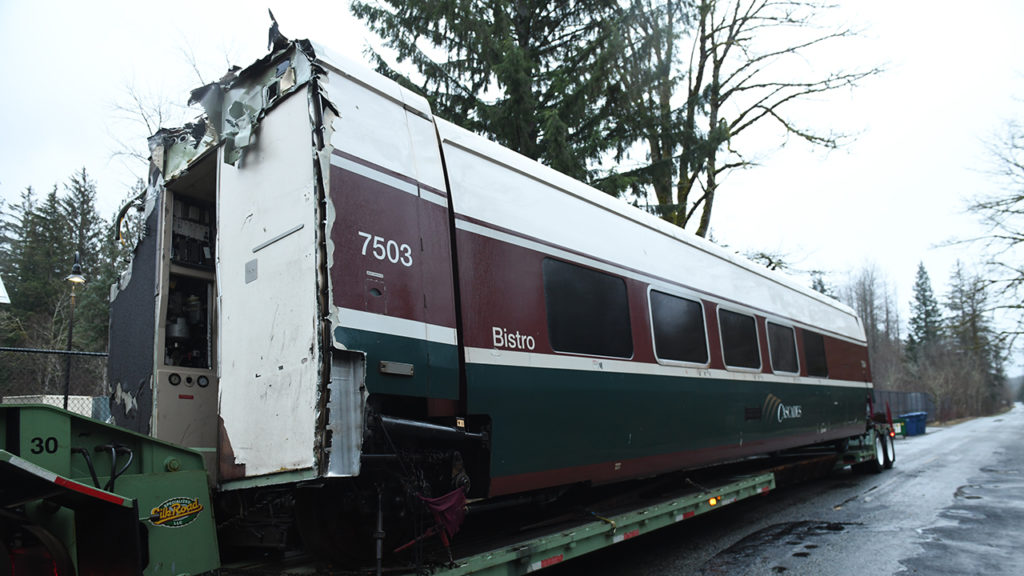
Amtrak sent its two trainsets to its Beech Grove, Ind., maintenance facility and placed them in storage. Amtrak sold those sets for scrap in late 2022. At the very last minute, the Northwest Railway Museum was able to negotiate the donation of one signature Bistro car, which has been set aside for preservation. Rail Exco graciously donated the car to the Museum and helped prepare it for return shipment to Washington State.
César Vergara Backgrounder
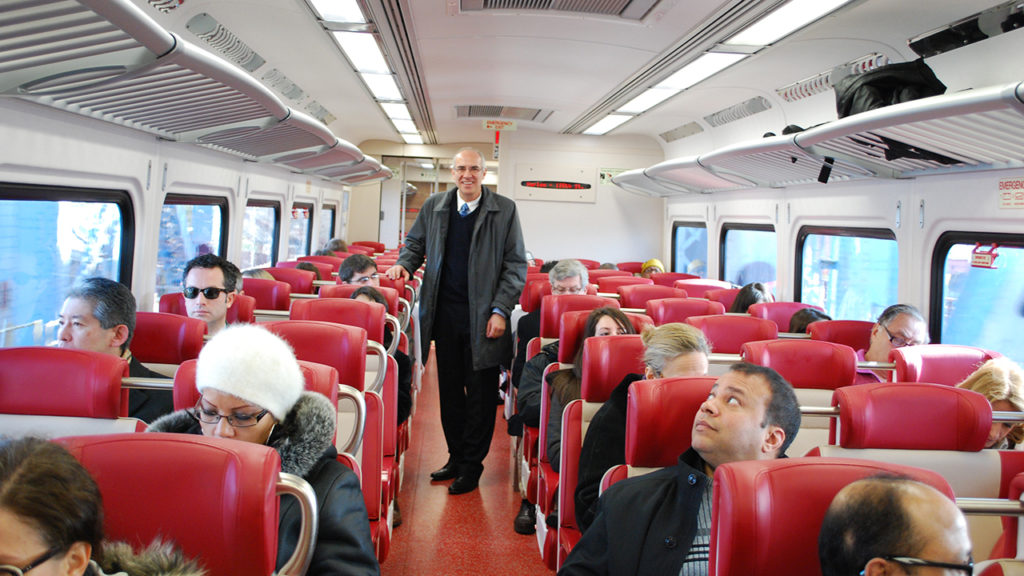
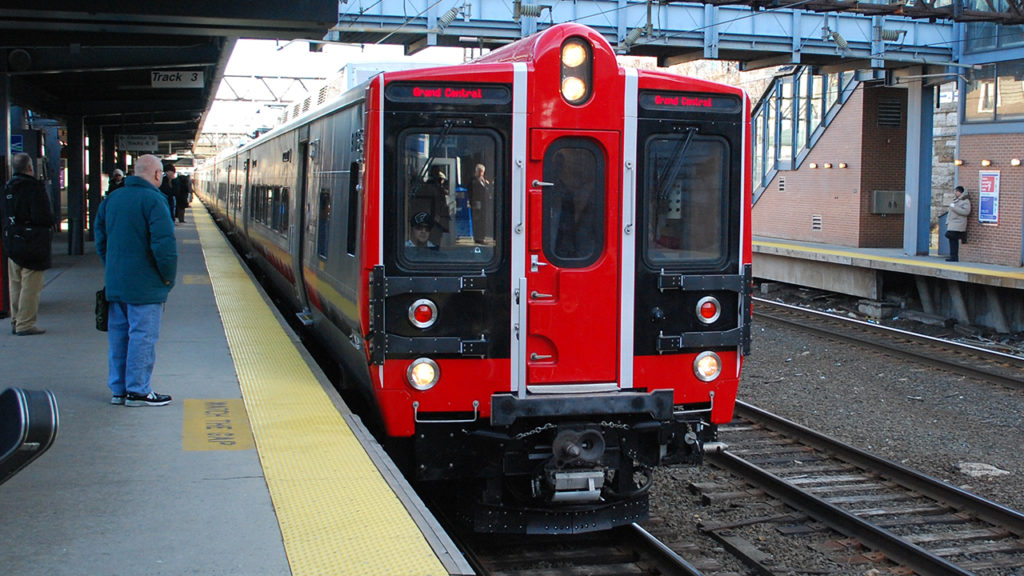
Born in Mexico 1956, César Vergara displayed early aptitude in drawing. Starting at age 9, César accompanied his father to his firm specializing in school design. These visits included construction sites and archeological visits. His father, an architect involved in conservation of pre-Hispanic and colonial buildings, was also an architect in the design of the Mexico City Subway, providing a glimpse of César’s future career as a railway industrial designer.
The family relocated to Washington, D.C., after César’s father accepted a position as a school architect with the World Bank. César attended St. Johns College High school, graduating in 1974. Very active in the Art department, his work was often showcased in several student Art exhibitions including a one-man show. César attended Montgomery College in Rockville, Md., completing AA degree in Photography and Advertising Art. His work was well received, and together with another Montgomery College student, was selected to transform the muted computer science building lobby into a dynamic space with a mural.
The successful completion of the mural spawned the idea of seeking mural work in Washington to coincide with the Bicentennial celebrations. The timing worked, as panels in the downtown area surrounding construction sites were drab. The team landed a project decorating the panels of the construction site of the International Union of Operating Engineers, which caught the attention of the art director of the nearby National Geographic Society. He asked if a mural could be painted in a tunnel connecting two NGS buildings at 17th and M streets. This work was completed, dovetailing into a two-summer internship in the art department of National Geographic.
César intended to seek a career in industrial design. He applied at Konstafackskolan, the State School of Art and Design in Stockholm, Sweden, where he studied for four years and was awarded his bachelor and masters in Industrial Design. The master’s work specialized in metal design, which combined with a thesis on crashworthiness under the guidance of Charmers Technical University in Gothenburg, Sweden, served as a strong foundation for his later work in the railway industry.
Upon graduation from Konstfackskolan, César was hired as an industrial designer at the prestigious Gustavsberg porcelain factory outside of Stockholm for two years. After that, he Joined Utveckings Design, a top tier firm specialized in industrial robots and passenger train design. He grasped the opportunity to contribute on rail equipment projects, most notably in the X-10 commuter train serving Gothenburg, Sweden. That was the turning point where César understood train design was his calling.
During his years in Sweden, César travelled the European rail network, culminating with an eight-day trip from St. Petersburg in the Soviet Union to Peking, China. After more than ten years in Stockholm, César returned to the U.S., where he worked at the prestigious Henry Dreyfuss Associates in New York City on various projects including John Deere farm machinery.
César returned to Mexico City to join the National Railways of Mexico as Chief Designer. In that capacity,he designed a dining car and numerous projects in buildings and rail equipment. His most important contribution to the Mexican Railways was his work in the National Museum of the Mexican railraods in Puebla, Mexico. The Museum is located in an historical structure that served as Puebla’s rail station from 1856 until it became the museum.
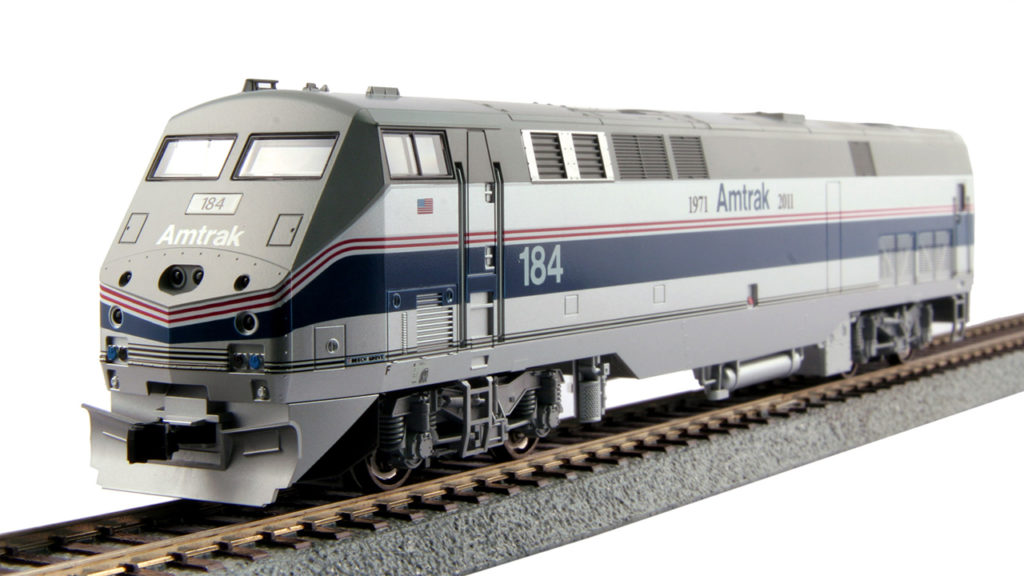
In 1990, César was tapped as Manager of Car Design at Amtrak, where he subsequently became Chief Designer. At Amtrak, César led a team of industrial and graphic designers that was responsible for a large portion of the modern Amtrak fleet, among which were the Superliner II, Viewliner, GE Genesis locomotive, Amtrak’s version of the EMD F59 PHI, and the Cascades Talgo
In 1999, César left Amtrak to join TEAGUE, the prestigious industrial design consulting firm serving Boeing, guiding establishment of a rail design practice as a logical extension of the firm’s aviation work.
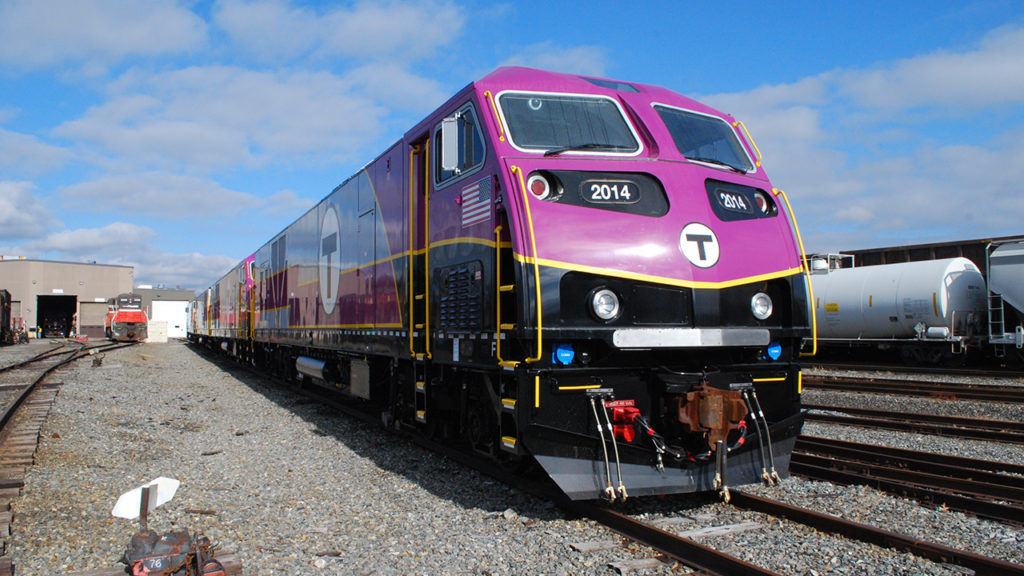
After leaving Jacobs, César formed VergaraStudio LLC, serving the railway and public transit sector. He was responsible for the graphics of the 7,000-unit taxi car fleet in Washington, D.C. and the DC Circulator Buses.
In 2000, César joined New Jersey Transit as Chief Designer/Assistant Executive Director where he was responsible for establishing the look and feel of the passenger experience in both equipment and facilities. Two years later, César was tapped by Jacobs Engineering as National Principal of Design. His work at Jacobs encompassed equipment design, mainly that of the Metro-North Railroad Kawasaki M8 commuter rail fleet. During his six years with Jacobs, he also contributed the Wabtec HSP46 locomotive design for MBTA, as well as the aesthetics of commuter rail bridges.
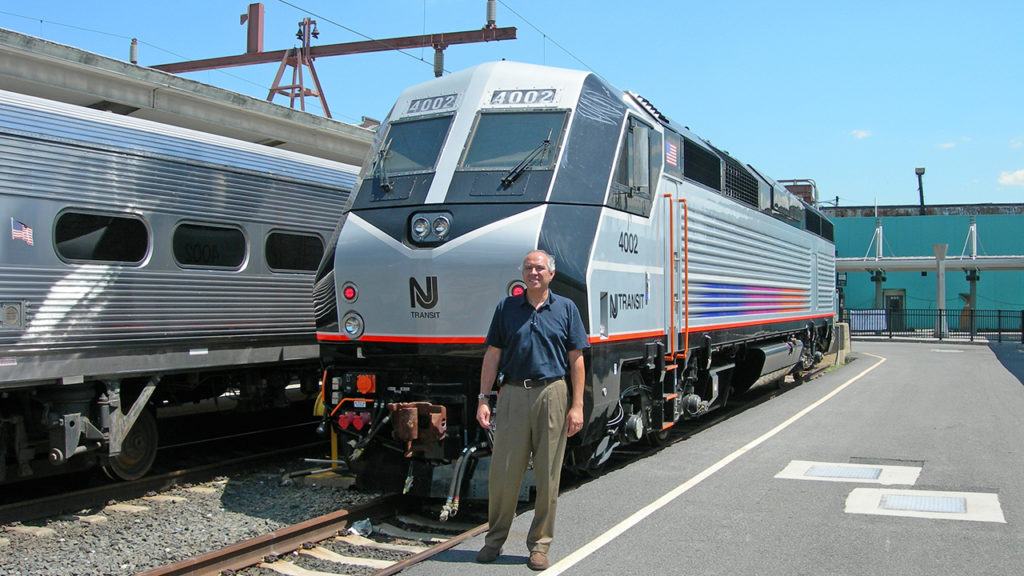
César is a member and U.S. delegate of The Watford Group of architects and rail designers. He was on the team hosting the 1994 Watford Conference in Williamsburg, Va., and the 2011 conference in New York City and Washington, D.C. César is a resident of Ridgefield, Conn. where he lives with his wife Aideen, a nurse practitioner. They have five children, the youngest a junior in college.
Museum Backgrounder
The Northwest Railway Museum is a leading cultural institution located in east King County (east of Seattle) in the cities of Snoqualmie and North Bend. It was founded in 1957, introduced public programming in 1967, and today serves a combined paid/unpaid visitation of more than 130,000 individuals.
A professional staff of 12 manages the Museum, supported by 134 volunteers who each year contribute more than 12,000 hours of time. The Museum is governed by a nine-member Board of Trustees and maintains an annual operating budget of nearly $1.6 million. It is a Washington State nonprofit corporation and is recognized by the Internal Revenue Service as a 501(c)3 tax exempt organization.
The Museum is best known for its heritage railway, but also operates more traditional museum programming and is engaged in historic preservation of railway cars and locomotives. A sampling of significant objects and programming includes:
Chapel Car 5 Messenger of Peace: This mobile church was constructed by Barney and Smith in 1898 “as a tool of modern evangelism” funded by 100 $100 subscriptions purchased by ladies from leading American families, and was also known as the “ladies car.” It served the American Baptist Publication Society for 50 years, touring more than a dozen states where it would visit communities to help build a congregation and establish a church. It appeared as a railroad exhibit at the 1904 St. Louis World’s Fair, and subsequently spent a year promoting establishment of the Railroad YMCAs in railroad terminals.The Messenger of Peace is featured in the Train Shed exhibit hall and is accessible during regular hours.
Snoqualmie Depot: This is the oldest and most iconic structure in historic downtown Snoqualmie. It was built for the Seattle, Lake Shore & Eastern Railway in 1890 and has been in nearly continuous railroad service ever since. It served six years for the SL&E, five years for the Seattle & International Railroad, 69 years for the Northern Pacific Railway, then five years for the Burlington Northern Railroad, and now more than 45 years for the Northwest Railway Museum. The depot was built in the late Queen Anne style, and features a prominent octagonal turret, two distinctive eyebrow dormers, and a decorative shingle roof. In keeping with the times, it featured a separate waiting room for unescorted ladies.The Snoqualmie Depot is open daily 10 a.m. – 5 p.m.
The Heritage Railway: The museum has preserved six miles of the original SL&E, which was constructed in 1889 by immigrant Japanese railroad workers and their managers. Many of these workers soon went on to work for James J Hill, completing the great Northern Railway in Washington State. The preserved line extends from Snoqualmie Falls to North Bend, and each year carries more than 49,000 museum visitors. The heritage railway operates weekends with departures from North Bend and Snoqualmie.
The Train Shed Exhibit Hall incorporates more than 24,000 square feet and was completed in 2011. It provides a semi-conditioned environment for the most significant and vulnerable artifacts in the Museum’s collection, including Puget Sound Electric Railway interurban 523 and Chapel Car 5 Messenger of Peace. Exhibits provide context for the historic artifacts and often feature photographs and documents from the Museum’s extensive library collection. The Train Shed exhibit hall operates all year with seasonally adjusted hours.
Library Collection: The Museum has amassed a significant collection of railway history and technical books, drawings, maps, photographs and related materials such as timetables. This collection focuses on railway heritage in the Pacific Northwest and is housed in a temperature- and humidity-controlled library vault on the Museum’s campus in Snoqualmie. The collection is open to researchers by appointment.
The museum has applied for permits to construct the Roundhouse Gallery, where additional landmark artifacts will be preserved and exhibited. The Talgo Bistro Car from the Amtrak Cascades will be one of the future exhibits in this new, 35,000-square-foot space.



